INSIGHT
Options to Improve Indoor Mobile Signal
What options do you have if mobile coverage in your building is unsatisfactory?
MOBILE NETWORK OPERATORS
MNOs have an obligation to provide coverage to 98% of the population
OFCOM
OFCOM carries out regular coverage checks
PROBLEM
Coverage externally does not translate to coverage internally
5G
Coverage will become more of an issue with 5G
To find out more about improving coverage inside your building please get in touch
Introduction
This article explains the various options available to building owners or tenants to improve the mobile coverage inside their buildings.
There are many ways to improve the mobile signal within your building. It is very much dependent on the user’s requirements.
If your mobile signal is good in your building.
Simply do nothing.
Suppose you don’t need mobile coverage in your office or building. If someone desperately wants to use their phone, they can stand by a window and hope that the service improves or exit the building and make calls outside. However, this may become a little tedious in the middle of winter.
You could choose a building near a cell site which improves the chances of you having a workable signal as long as you don’t have too much glass, steel and concrete involved in the construction of your building. Nevertheless, proximity to a cellular mast is not generally high on the list of priorities when choosing a place of work.
Perhaps the critical individuals in your organisation need good mobile service, in which case you could make sure that their offices face the local cell tower, thus ensuring that they have coverage as required. However, this does raise a dilemma: Who do you deem most important to your organisation? Because, for example, when the toilets stop working and you need the facilities team. Facilities, now become the most important people in your business, and giving facilities the office near the loading bay, in the basement, next to the bike store; doesn’t seem like such a great idea when you can’t get hold of them because mobile service is non-existent on level B3.
The next option is to ask your mobile network provider for some assistance. Several years ago, this would have been a perfectly feasible option, as the mobile network operators would put in solutions to support their large corporate customers (which is why in some buildings, there may be one network that works well). But as time has passed, markets have matured, and buildings have become more complicated. In addition, people tend to use their own devices and choose their operators. Mobile network operators put in fewer systems for in-building coverage and understandably do not put in systems for their competitors. So, unless you own a 65000 plus-seater stadium that holds weekly events, or a shopping centre with 20 million-plus footfall, don’t expect the mobile operators to come rushing to your rescue.
You can take actions to assist the transmission of the surrounding radio signals but to the detriment of other aspects of the building quality, carbon footprint and valuation. For example, you could do away with your double glazing and low emissivity glass, replacing them with single floating panes. This would improve the radio signals, but you and your colleagues would boil in the summer and freeze in the winter. You could also remove all internal partitions and not occupy buildings taller than five floors. But, this would not make a great working environment, and you could find yourself losing employees because the working conditions would be awful.
How good is mobile coverage in your building?
Typically, users in a building will let building management know there is an issue with mobile coverage either by complaining or by leaving. You can also look at Ofcom reports or have a professional survey (which looks at building performance floor-by-floor) to assess mobile coverage in your building.
Ofcom measures the mobile operators’ network performance every quarter. The mobile operators are responsible for providing coverage to 98% of the population, which makes perfect sense, as there is no point in providing coverage for the middle of Kielder forest, which only sees the occasional forestry worker or dog walker. So, when deploying coverage in a city, the mobile network operators provide coverage where they will be evaluated, at street level, because that is where Ofcom will assess the mobile phone service. Therefore, if you are the owner or tenant of a multi-storey building in a large city, don’t expect mobile coverage above the 5th or 6th floor because Ofcom doesn’t measure the signal at that level.
If a building is constructed of steel and glass and over 5-7 floors tall. In that case, there will probably be an issue with a ‘temperamental’ network connection and the need for an in-building mobile solution, typically an in-building distributed antenna system (DAS). These come in various configurations and depend on the tenant’s and the owner’s requirements
- 5G or 4G
- levels of performance required for mobile devices,
- the number of areas where coverage is required).
With the proliferation of flexible working environments, where employees don’t have a dedicated desk or work across multiple sites, the requirement for robust mobile phone coverage becomes more acute, particularly if you want visitors to be able to use their mobile devices.
Several factors will influence the type of system that could be installed; a few examples of these considerations are as follows:
- Construction materials
- Number of floors
- Occupancy – number of potential users
- Building usage and its influence on user profiles
- Location of the building
- Technologies required
- Joint Operators Technical Specification
To explain the different options available, Pan RF will clarify how these factors influence a system’s design and deployment.
Construction Materials
Modern buildings are designed with user experience and often with natural light as a critical consideration. They are also required to be constructed quickly. Therefore there is a lot of glass, concrete and steel. Whether this is a supermarket in a retail park or a multi-storey office block in the middle of a significant city, steel, glass, and concrete will be used to build quickly. Radio signals and modern building materials don’t mix well. (Click here for an overview)
Number of floors
Mobile network operators’ performance is measured by their ability to provide coverage to the user on the street, so if you are on level 5 or above, there will be a degradation in the quality of your signal as MNOs tend not to point their antennas upwards. There is also the issue of network management. If you have a mobile phone that is at high elevation, the device can “see” more cells, so it will be hopping from one cell to another as the strength and quality of those signals change; this will cause your phone’s battery to die quickly as it powers up and down to manage its “best server” list. To explain this further, the phone always reports its status to the network, even when the device is sitting in your pocket. This is because when you use your handset, the device already knows what the best resources are available to it, so the interaction with the network is faster and contributes to a great user experience. Next time you go on the underground and return to street level, notice how your phone will take a little longer to function normally; this is because it is getting back in touch with the network after being in the “dark”.
Occupancy – number of potential users
Have you ever been to a significant public event, like a concert or sporting event, and struggled to make a call or send a message while in the stadium or arena? The reason for this is that the mobile network is struggling with capacity. For anyone crossing a bridge at peak hours, you will also notice that you have a network but cannot make calls (London Bridge is a prime example).
A typical cell site that you see by the side of the road comprises several sectors, usually three but can be more. Each sector can handle a fixed number of active users. Suppose you have many people in a sector which exceeds the maximum number of active users the mobile network can handle. In that case, it starts to manage its resources to prioritise users based on their requirements and how much they pay for their service. So, if your building has high occupancy and mobile phone usage, you will require a system to handle all those users.
Building usage and its influence on user profiles
Buildings come in many shapes and sizes and have a wide variety of uses, from high-end hotels to office blocks and supermarkets, and each will have a different mobile user profile. The most detailed user profile would be an office building where all the users have a mobile on the same network; this simplifies the requirement for a system as only one operator is connected to your internal mobile system.
Then some offices have multiple tenants, each with their individual needs and different networks, along with the increase in the use of BYOD (Bring Your Own Device). Therefore a single operator solution would not fit the user profile in that building, creating a suboptimal service.
Finally, public spaces, shopping centres, hotels and supermarkets have dynamic user profiles. In simple terms, you don’t know who you will get through the door. People choose their mobile operator based on several factors, including working at home and available deals.
This makes it a simple choice for the building owner regarding what type of system is required on their premises. The type of system needed is a multi-operator hosted system, catering for all the different mobile operators. The two types used are analogue and digital systems.
The analogue system has a radio source with signals passively distributed to several antennas placed throughout the building to ensure continuous coverage, as seen below.
Analogue Multi-Operator Hosted System
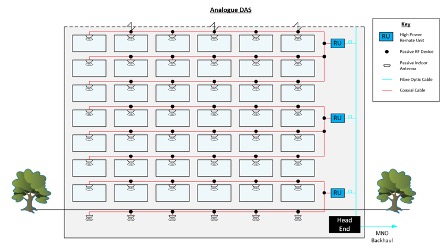
A digital system distributes a digitised radio frequency (RF) signal utilising structured cabling and a fibre backbone to connect the RF signal source to the radio units, providing coverage throughout the building. The use of structured cabling and fibre makes this deployment less disruptive to the building owner and tenants. An example of this type of deployment can be seen below.
Digital Multi-Operator Hosted System
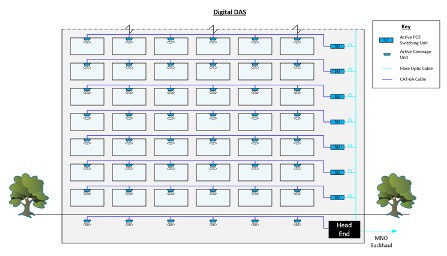
Location of the building
The location of the building can influence the coverage inside the building. If it is far away from population centres, the likelihood of there being good surrounding mobile phone service becomes less, as was discussed at the beginning of this article. However, if your building is in a dense urban environment, you will have a reduced service quality due to the increased number of users in those areas.
Technologies required
The transition into the 5th generation of mobile technology (5G) has seen the usage of mobiles change – people’s reliance on the services and functionality has increased. With the proliferation of apps to access banking services, booking train and airline tickets, meeting rooms, and even buildings, complete mobile phone service is necessary. Therefore, the optimal provision of 4G and now 5G services are required inside buildings in the new digital age.
We have discussed 5G v 4G in another article, but in short, getting 5G into a building requires more system design experience and diligence to ensure true 5G (you may have bars on your phone but not a genuine 5G connection).
Joint Operators Technical Specifications (JOTS)
JOTS details the approved technical standard required by the mobile operators to join an in-building distributed antenna system. The mobile operators only accept applications from a limited number of vetted providers.
The JOTS forum was formed in 1999, and the first technical document was issued on the 5th of May. This laid out the technical requirements for multi-operator cellular systems deployed inside buildings. What this boils down to is that the design and installation of a system must be one the operators are happy to connect their equipment to. If they view the design (or worse, the subsequent installation) as not conforming, they will not connect to the building. This is because, regardless of where a mobile service user is, if they have a poor customer experience, they will complain to the company they pay to provide them with that service. So, the operators have a rigorous approval process to ensure that in-building services meet their required standards, as laid down in JOTS. Mobile network operators will not join the proposed system if an in-building system does not meet those standards.
Final Thoughts
Multiple factors can influence the choice to install a mobile coverage solution inside a building. Still, the reality is that, with the explosion in mobile use in the last 25 years, businesses, services and people have become inextricably linked to their mobile devices, whether it is a simple device to make and receive calls or a tablet that is a mobile work station for an engineer working remotely on a wind farm, they are part of our daily existence and functioning without one is possible but can make things far more complicated and tedious. If we could go back two generations and tell our grandparents that we can now talk with and see people on the other side of the world with a device that fits in our pocket, they would not believe us. It is hard to imagine being without our mobile phones for more than a few hours at a time.
In today’s modern world, the mobile is our alarm clock, trainer, music, entertainment, wallet, camera, compass and a thousand other applications that make our lives easier. All these things are fantastic, but without a reliable network service behind it, the mobile phone would be left in the bottom drawer of your bedside cabinet with your pocket organiser and your old Nintendo game boy. As we see more and more, people wouldn’t spend any time visiting or working in a building if their principal mode of communication doesn’t work there.
Related Posts
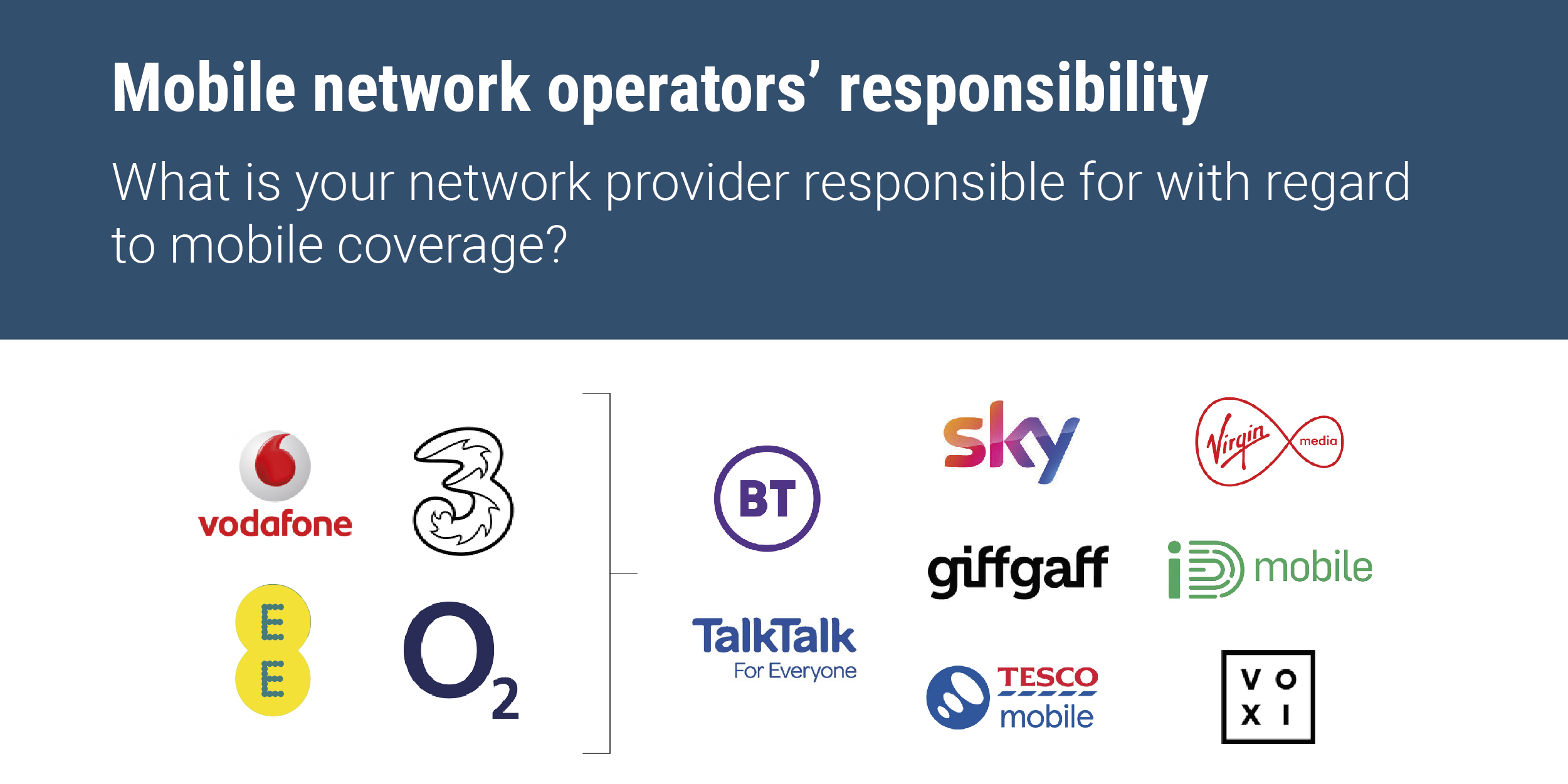
Mobile network operators’ responsibility
The problem with coverage and MNO responsibility
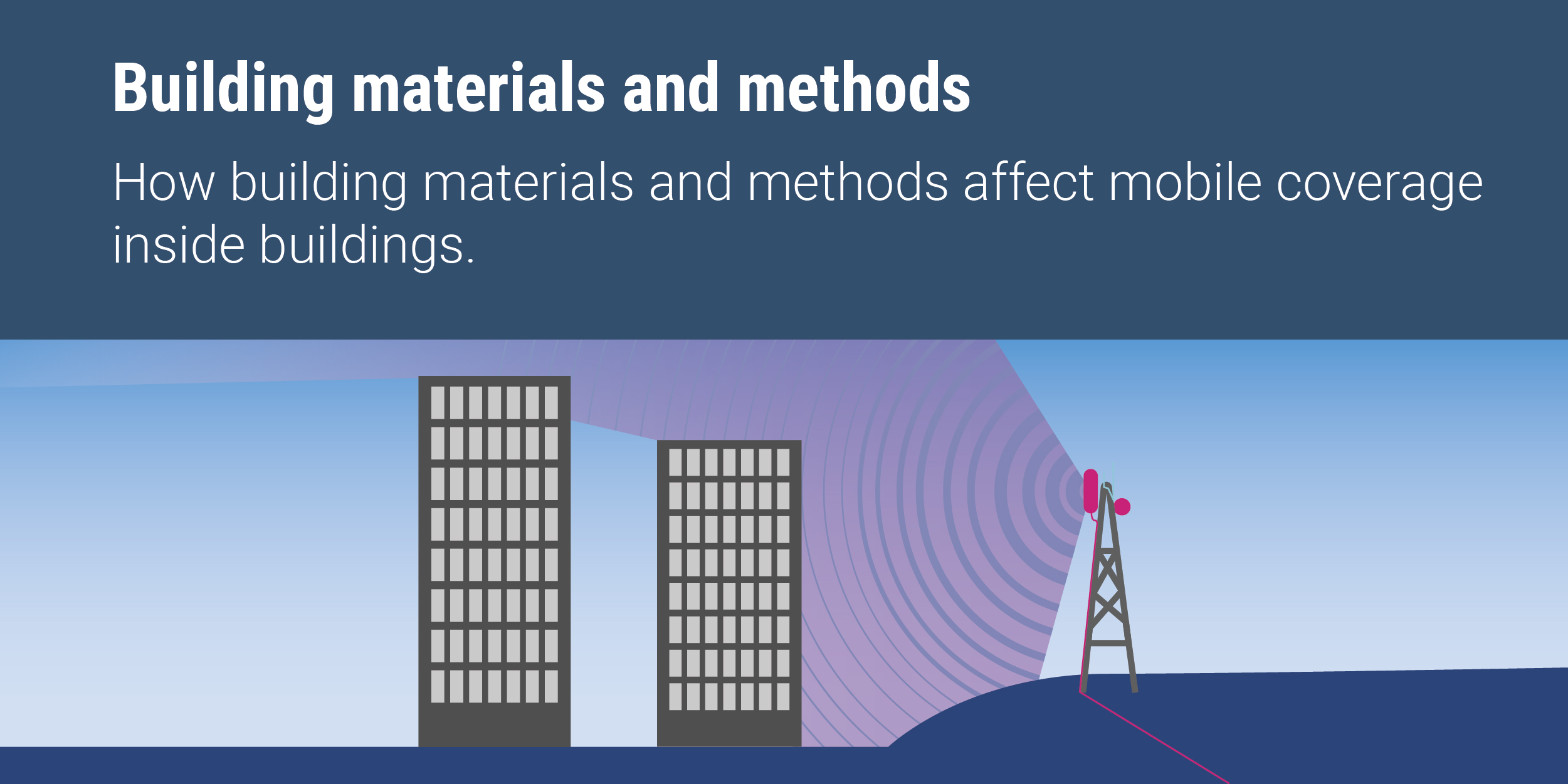
Building Materials and Methods
Private Cellular Networks (PCNs) are the ultimate business continuity communication system.
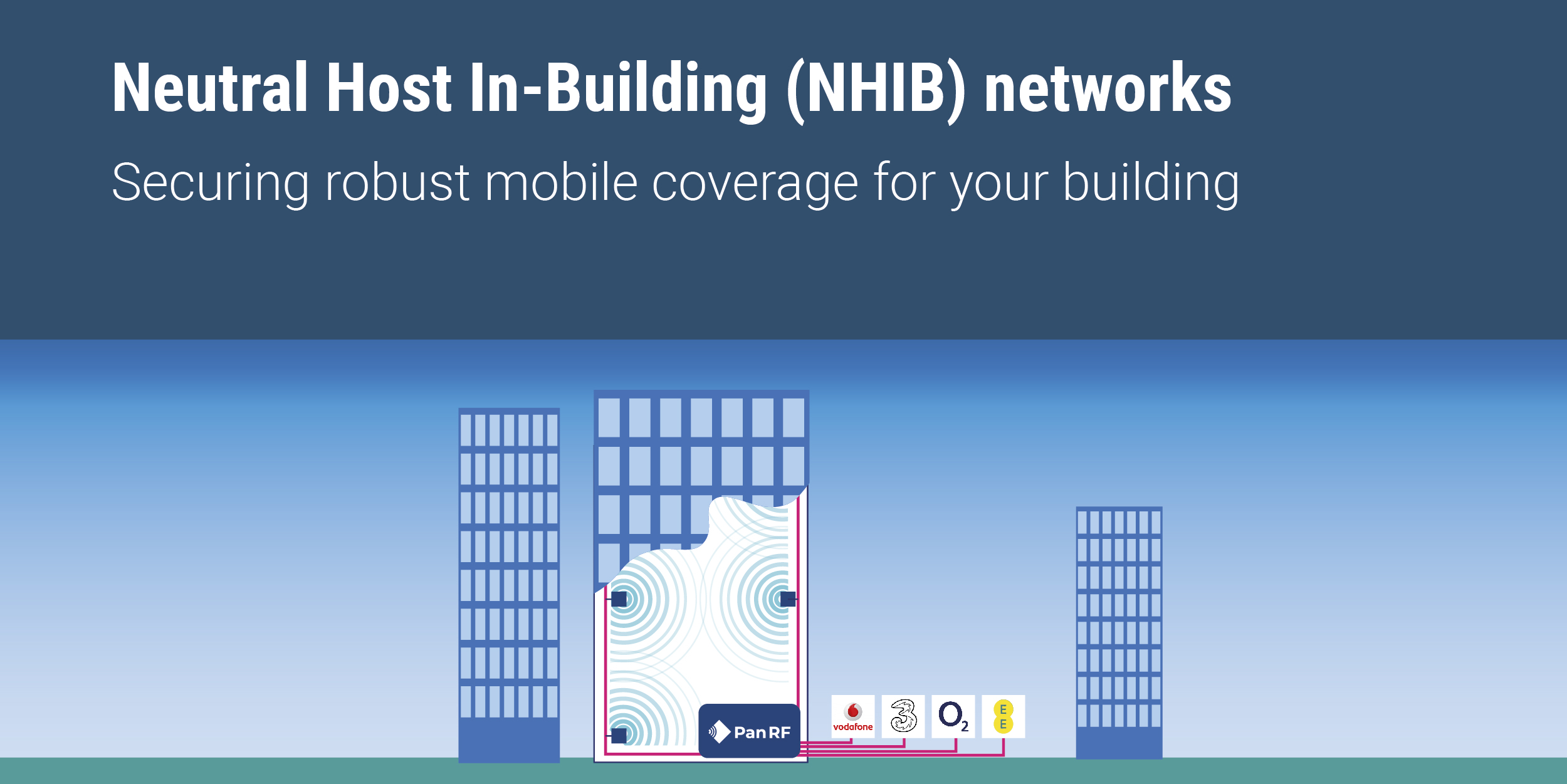
Neutral Host In-Building Networks
Private Cellular Networks (PCNs) are the ultimate business continuity communication system.




